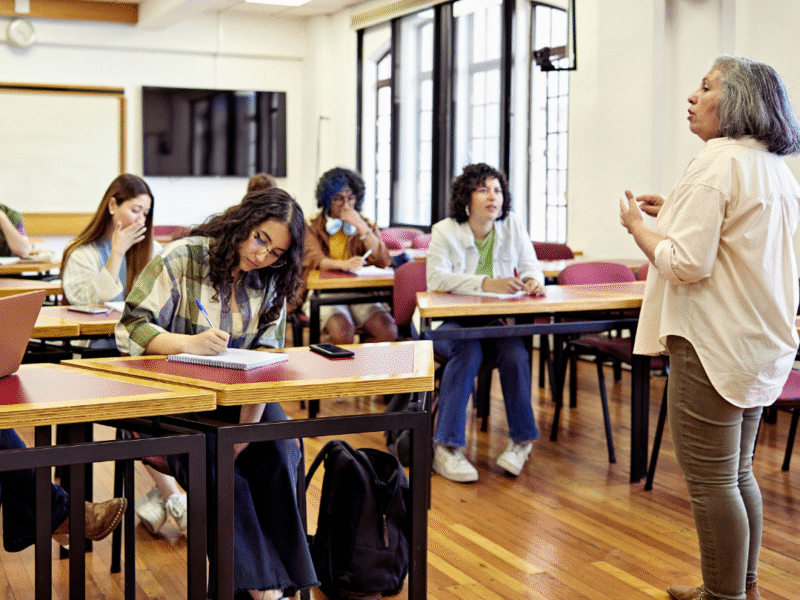Different learning styles can significantly impact how individuals absorb and retain information. By identifying whether someone is a visual, auditory, or kinesthetic learner, tailored study tips can enhance their educational experience and improve retention. Customizing study methods to fit these styles often makes learning more engaging and effective.
Visual learners benefit from diagrams, charts, and other graphical resources, while auditory learners thrive on discussions and explanations. Kinesthetic learners prefer hands-on activities that allow them to actively engage with the material. Understanding these distinctions ensures that study sessions maximize effectiveness and accommodate each learner’s preferences.
Implementing specific strategies designed for these styles can lead to better comprehension and retention of knowledge. By exploring targeted study tips for each learning style, educators and students can create more productive study environments that cater to diverse needs.
Understanding Different Learning Styles
Recognizing various learning styles is essential for effective study strategies. Each learning style requires tailored approaches to maximize engagement and retention.
Visual Learners: Strategies for Engagement
Visual learners thrive when they can see information represented in charts, diagrams, and images. They benefit from the use of color coding to highlight different concepts, making it easier to organize and recall information.
Incorporating mind maps can also help visual learners connect ideas. Flashcards with pictures and illustrations can reinforce memory retention.
To enhance learning further, visual learners might consider using videos and diagrams to supplement texts. Creating visual summaries of study materials can transform abstract concepts into recognizable forms, aiding understanding.
Auditory Learners: Techniques for Effective Listening
Auditory learners excel when information is presented through sound. Discussion groups or study sessions that involve talking about the material can enhance comprehension for these learners.
Listening to recorded lectures or audio summaries aligns well with their preferences. Techniques like reading aloud can also facilitate better retention of information.
To build effective study habits, auditory learners might focus on rhythmic patterns or mnemonics. Incorporating music that relates to study topics can create a memorable association, aiding recall during tests.
Kinesthetic Learners: Incorporating Movement in Study
Kinesthetic learners grasp concepts best through hands-on experience. These individuals should use physical activities such as role-playing or simulations to engage with the material.
Creating models or conducting experiments can solidify comprehension. Breaks involving movement, such as stretching or brief walks, can also help maintain focus and energy levels.
Study sessions for kinesthetic learners should mix traditional study methods with interactive practices. Tools such as flashcards can be used in a game format to add excitement while reinforcing learning.
Effective Study Techniques and Tools
Utilizing effective study techniques and tools can significantly enhance learning outcomes. Various strategies cater to different preferences, ensuring a more personalized and efficient study experience.
Note-Taking Methods for Comprehensive Learning
Effective note-taking is crucial for retaining information. Popular methods include:
- Cornell Method: Divides the page into sections for main notes, cues, and a summary, aiding in quick review.
- Mind Mapping: A Visual representation of concepts showing relationships and hierarchies, beneficial for visual learners.
- Outline Method: Organizes notes in a structured format with headings and bullet points, ideal for linear thinkers.
Using these methods helps learners review material more effectively and locate key information quickly. Additionally, reviewing notes regularly enhances memory retention.
Creating a Study Guide for Better Retention
A well-structured study guide consolidates information and fosters active learning. Steps to create an effective study guide include:
- Collect and summarize class notes, textbooks, and resources.
- Organize content into sections based on topics, using headings and subheadings for clarity.
- Include charts, graphs, or images where applicable to reinforce visual memory.
Regularly updating the study guide with new information can keep it relevant. Engaging with the content, such as quizzing oneself, greatly improves retention and understanding.
Utilizing Time Management for Optimal Study Time
Time management plays a pivotal role in academic success. To maximize study sessions, students can:
- Use the Pomodoro Technique: Study for 25 minutes followed by a 5-minute break, repeating this cycle to maintain focus.
- Prioritize tasks using a to-do list or matrix to identify urgent vs. important tasks.
- Set specific goals for each study session to maintain a clear focus.
Minimizing distractions is also vital. Designating a specific study environment and using tools like website blockers can enhance concentration. Effective time management leads to more productive study habits and improved academic performance.
Maximizing Retention and Memorization
Effective retention and memorization involve employing specific techniques tailored to learning styles. Incorporating diverse methods can significantly enhance one’s ability to remember information.
Strategies for Long-Term Retention
Utilizing retrieval practice is essential for long-term retention. This involves regularly testing oneself on material instead of merely reviewing notes. Techniques such as flashcards or practice quizzes can make studying active and engaging.
Spaced repetition complements this by revisiting material at increasing intervals. This method helps reinforce memory pathways and reduces the chances of forgetting.
Additionally, connecting new information to existing knowledge through meaningful associations strengthens memory. Visual imagery, acronyms, and mind maps are effective tools in this strategy.
Hands-On Activities to Enhance Memory
Hands-on activities create an immersive learning experience that can enhance retention. Engaging with materials in a practical manner helps solidify concepts in memory.
For example, science experiments or interactive simulations enable learners to apply theories directly. This experiential learning promotes deeper understanding and recall.
Group projects also facilitate memory retention, as discussing and teaching others can reinforce one’s grasp of the subject. Activities like role-playing scenarios in language learning can further solidify vocabulary and grammar through real-world application.
The Role of Breaks in Effective Memorization
Incorporating breaks into study sessions can significantly improve memorization. The brain needs time to process and consolidate information.
Implementing techniques like the Pomodoro Technique, which involves studying for 25 minutes followed by a 5-minute break, optimizes focus and retention. During breaks, activities such as stretching or brief walks can refresh the mind.
Mindfully stepping away from material allows for better processing of what has been learned. This balance of study and rest is crucial to maximize memory retention effectively.



